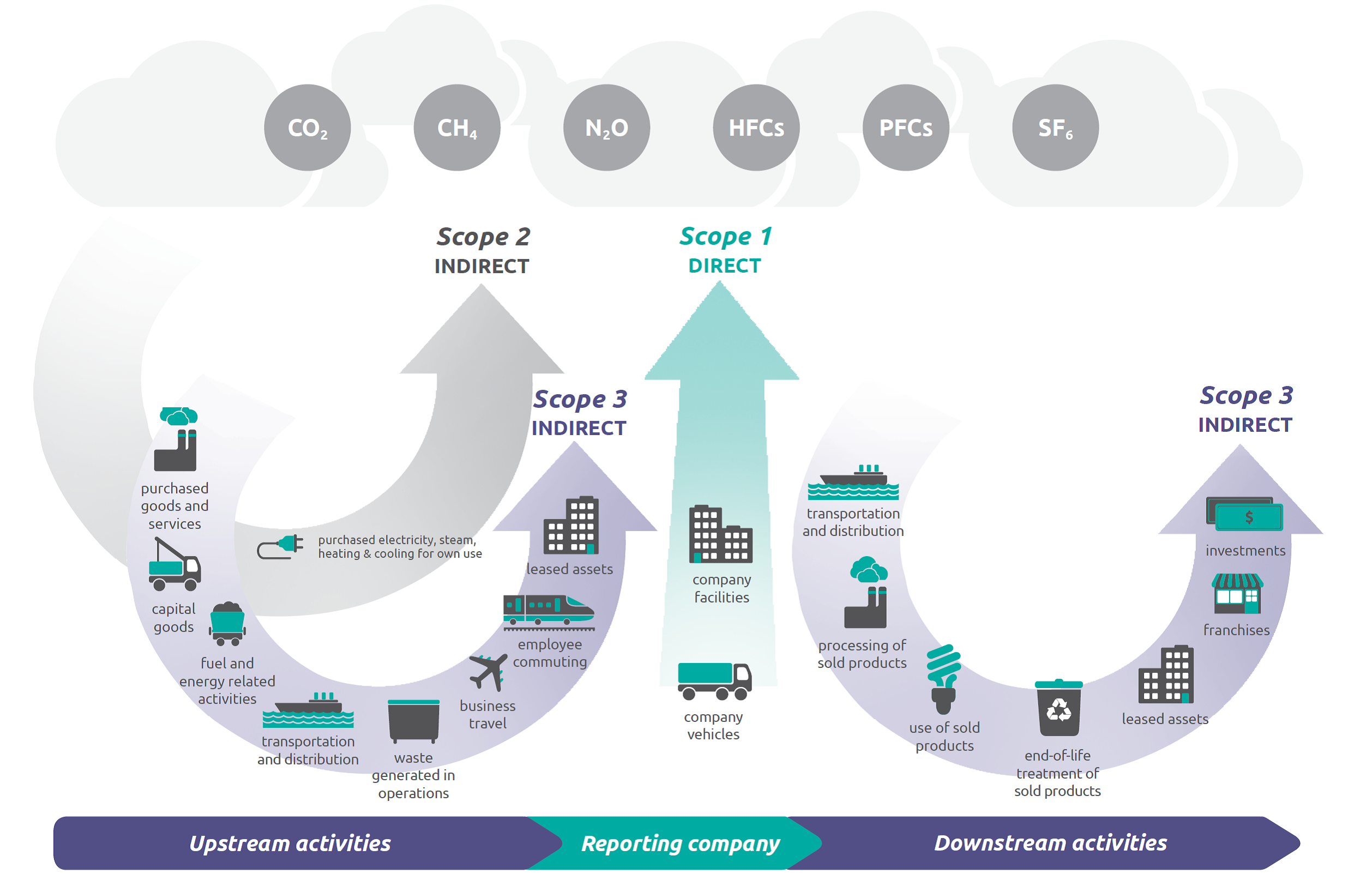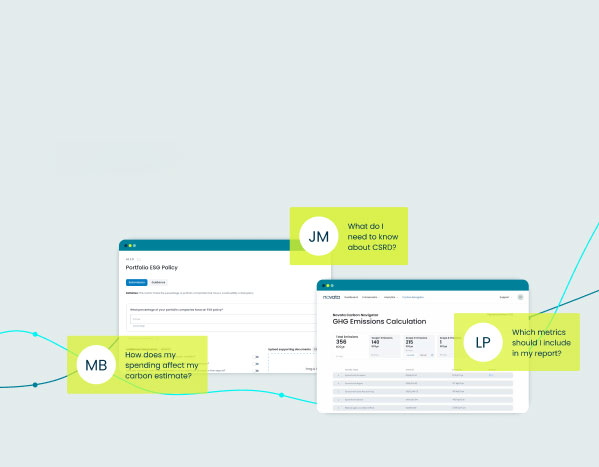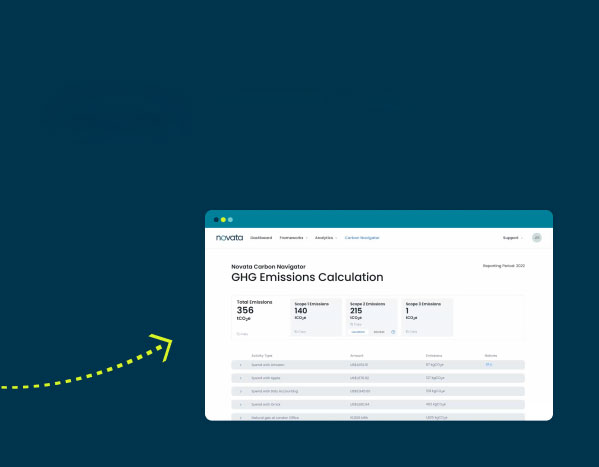In the world of greenhouse gas (GHG) measurement and accounting, the terms ‘Scope 1, 2, and 3’ are ubiquitous and often used with little explanation. And with the demand for emissions disclosure on the rise, understanding these terms is ever more important. This article breaks down Scopes 1, 2, and 3 and the differences between them.

Scope 1 Emissions
As defined by the GHG Protocol, Scope 1 emissions are the direct emissions caused by resources controlled by the company. These are divided into four categories:
- Stationary combustion: all fuels and heating sources (e.g. gas boilers)
- Mobile combustion: all vehicles owned or controlled by a firm and burning fuel (e.g. company cars and vans).
- Fugitive emissions: leaking GHG sources (e.g., refrigerants, methane pipes)
- Process emissions: released during industrial processes (e.g., production of CO2 during brewing, making fertilizer, cement)
Scope 2 Emissions
Scope 2 emissions refer to the indirect emissions that are released into the atmosphere as a result of the consumption of purchased electricity (and heat and cooling). For most organizations, electricity will be the most important, or the only, source of Scope 2 emissions.
There are two ways to calculate Scope 2 emissions:
- ‘Market-based’ methodology: this takes into account a company’s specific energy contracts. This is typically used to take ‘credit’ for procuring renewable energy
- ‘Location-based’ methodology: this only considers the average emissions intensity of the grid where the electricity is used
Scope 3 Emissions
Scope 3 emissions cover all other indirect emissions generated by the company. This includes both upstream and downstream emissions, and includes the entirety of a business’ value chain. The GHG Protocol separates Scope 3 emissions into 15 categories. Some of the most important are as follows:
Upstream (i.e., emissions generated from producing a business’ goods and services):
- Purchased Goods & Services
- Business Travel
- Employee Commuting
- Waste
Downstream (i.e, emissions generated from the use and disposal of those products):
- Use of Sold products
- End of Life of products
- Investments
- Leased Assets
In the vast majority of businesses, the supply chain represents the largest source of GHG emissions and is one of the most complex to calculate.
Calculating Your Carbon Emissions with Novata
The need for climate action is urgent and setting science-backed targets to support a company’s decarbonization efforts starts with having accurate data. Measuring carbon emissions can be a challenging process, but it doesn’t have to be.
Novata’s Carbon Navigator makes it easy to calculate your carbon emissions with an intuitive, easy-to-use interface and step-by-step guidance along the way. Novata in-house experts also provide dedicated support with tailored data collection workflows and data quality reviews.






